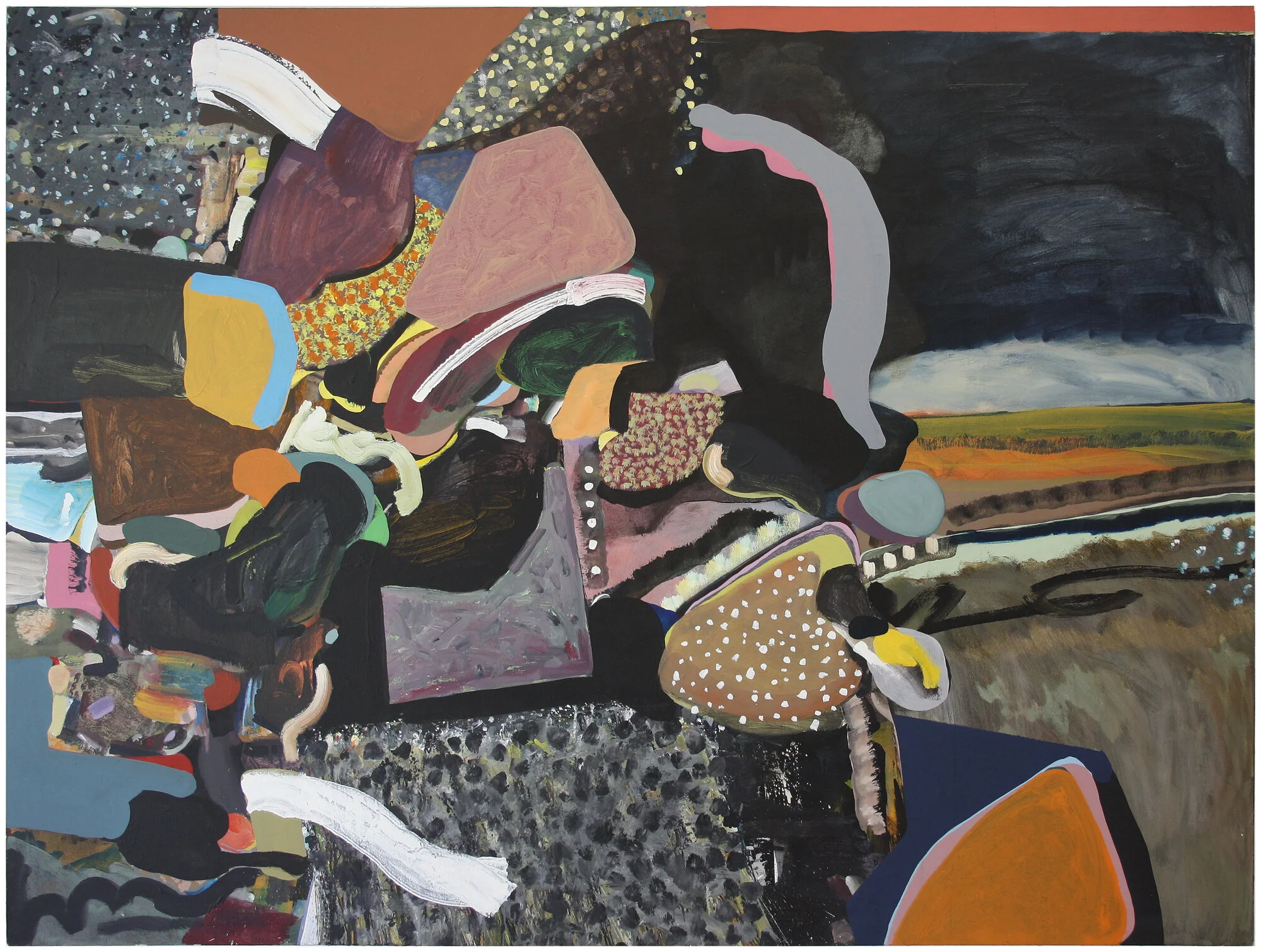Peter Suchin
Compendiums and Palimpsests, the title of my 2003 exhibition at T1+2 Artspace, London, sums up two key components of my practice as a painter: the bringing together of disparate forms, and a concern with obliteration and overlay. Each individual work goes through an extensive process of revision and redefinition, although its starting point is always zero, a blank canvas or other kind of empty support. No external source material is used, the painting being composed entirely on the canvas or board. Initially aspiring to formal economy and restraint, this optimistic intention is soon superseded by a sort of will to “correct” or modify the marks or layers of paint already applied. The building up of the surface is complicated and time-consuming, with the work frequently developing over years rather than months, finally reaching, as can be seen in the accompanying reproductions, a complexity of Baroque proportions. My working process thus involves a seemingly-endless improvisatory modification of what is laid down, fairly indifferently, at the start. This technical or procedural approach echoes that of my parallel practice as a writer. In both mediums one may begin openly and unsurely, but as soon as the first tracks of acrylic stain the surface, or letters and words manifest themselves on paper or screen, the game, as it were, has begun.
But if, in my writing, I rework the text so as to present the reader with a specific argument or position, with painting my aim is very much the reverse. In the latter I try to make something which, while drawing on a range of painterly allusions, subscribes to no single philosophy or artistic style. Although these works may, for example, suggest glimpses of a landscape or the stacked paraphernalia of a convoluted still life, they operate between representation and abstraction, convention and chaos, the fragment and the whole. It would be more accurate to suggest that over the long period of its production a work reaches what might be called its “optimum state”, as opposed to its definitive conclusion. In this respect two important, if paradoxical, features of these paintings are their loose ends and false trails. I do not believe it possible to force the viewer to see visual artworks, which are, in all cases, inherently ambiguous things, in the “right” way. Nor do I want to tightly limit how these particular paintings are received. Control of meaning is the province of propaganda, not art.
In his Image-Music-Text (Fontana, 1977), Roland Barthes emphasised that “all images are polysemous; they imply...a “floating chain” of signifieds”, leaving the viewer free “to choose some and ignore others”. (p. 39). He also refers to “an absence of meaning full of all the meanings…a kind of Edenic state of the image [in which it] would become radically objective, or, in the last analysis, innocent.” (p. 42) This richly promiscuous condition of the visual sign may seem at first sight to be merely indulgent and naïve, but it is in fact directly political. In a society fixated on the unrestrained pursuit of profit, and in which this arguably pathological condition is reiterated to the practical exclusion of all other values, it has become increasingly necessary to defend the playful and the non-utilitarian, putting the artwork’s autonomy, not its investment value, centre-stage.
These paintings are secular, non-expressive, ludic, and indulgent in an intentionally positive fashion. They are not transmitters of preconceived meanings but, rather, propositions in which pictorial conventions, crude allusions, and a tactful smattering of accidents are brusquely aligned. I think of them as fragile picture-puzzles or optical illusions, “grand schemes”, sometimes holding together, sometimes falling apart.
Peter Suchin
Painting at the top of the article:
The Grey Planets, 2006
Acrylic on canvas,
138 x 184cm
Vinteuil Approximation, 1997, acrylic on board, 21 x 30cm
Connotation Field, 1999, acrylic on board, 61 x 76cm
Tempered, Distended, Folded, Suspended, 2003, acrylic on canvas, 138 x 184cm
In the Night, Of the Night, 2006, 122 x 183cm
Blot Approaching the Coast, 2011, acrylic on board, 29.5cm diameter
Cryptic Panel, 2015, acrylic and coffee on board, 33 x 12.7cm
Secret Chamber, Capsule, Trap, 2020, acrylic on canvas, 15 x 15cm










